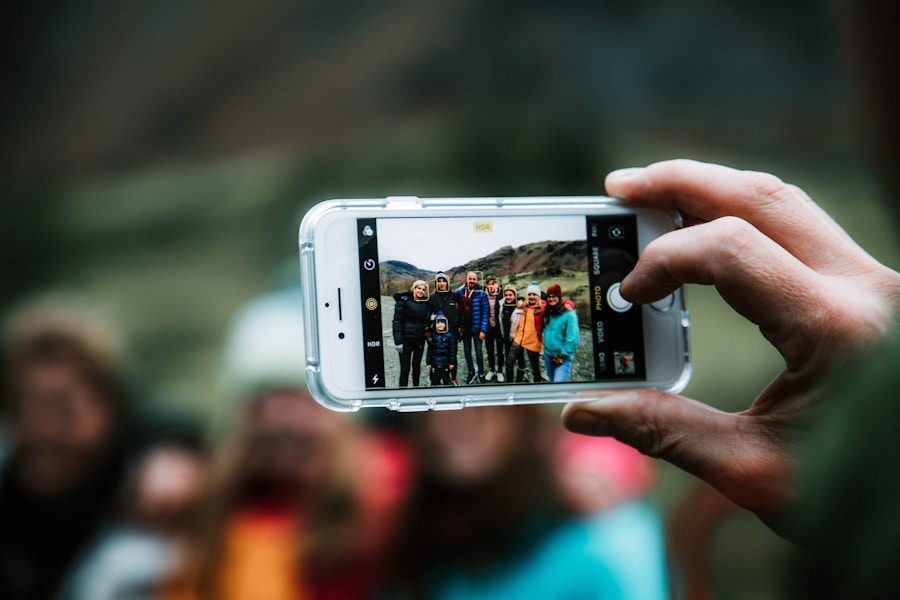User-generated content (UGC) refers to any form of content—be it text, videos, images, or reviews—that is created and shared by individuals rather than brands or organizations. This phenomenon has gained significant traction in the digital age, primarily due to the rise of social media platforms that empower users to express their opinions and creativity. UGC can take many forms, including blog posts, social media updates, product reviews, and even fan art.
The essence of UGC lies in its authenticity; it is often perceived as more genuine and relatable than traditional marketing content produced by brands. The motivations behind creating UGC are diverse. Some users seek recognition and validation from their peers, while others are driven by a passion for a particular brand or product.
For instance, a photography enthusiast might share stunning images of their favorite camera gear on Instagram, while a loyal customer may post a heartfelt review of a product they love on a brand’s website. This organic creation of content not only fosters community engagement but also provides brands with valuable insights into consumer preferences and behaviors. As such, understanding the dynamics of UGC is crucial for businesses looking to leverage this powerful tool in their marketing strategies.
Key Takeaways
- User-generated content is any form of content, such as images, videos, text, and audio, that has been created and shared by users on online platforms.
- User-generated content has the power to increase engagement, build trust, and create a sense of community within social media platforms.
- Strategies for harnessing user-generated content include creating branded hashtags, running contests, and encouraging user reviews and testimonials.
- Engaging with your audience through user-generated content involves actively responding to and sharing user-created content, as well as incorporating it into your marketing campaigns.
- Leveraging user-generated content for brand awareness can help increase brand visibility, credibility, and authenticity.
The Power of User-Generated Content in Social Media
The Power of User-Generated Content in Social Media
User-generated content (UGC) has revolutionized the way brands interact with their audiences on social media platforms such as Instagram, TikTok, and Twitter. By facilitating authentic conversations and fostering trust between consumers and brands, UGC serves as a bridge that enables a more participatory approach to marketing.
### The Trust Factor
Research has shown that consumers are likely to trust content created by their peers rather than traditional advertisements. This shift in consumer behavior highlights the importance of integrating UGC into social media strategies. Moreover, UGC can significantly enhance brand visibility and reach.
### The Power of Word-of-Mouth Marketing
When users share their experiences with a product or service on social media, they effectively become brand ambassadors, promoting the brand to their followers. This organic word-of-mouth marketing can lead to increased engagement and higher conversion rates. For instance, a clothing brand that encourages customers to post photos wearing their products can create a vibrant community of advocates who not only showcase the brand but also inspire others to make purchases.
### Exponential Growth in Brand Awareness and Customer Loyalty
The ripple effect of such content can lead to exponential growth in brand awareness and customer loyalty.
Strategies for Harnessing User-Generated Content
To effectively harness user-generated content, brands must adopt strategic approaches that encourage participation and creativity among their audiences. One effective strategy is to create branded hashtags that users can incorporate into their posts. This not only makes it easier for brands to track UGC but also fosters a sense of community among participants.
For instance, Coca-Cola’s #ShareaCoke campaign invited consumers to share photos of personalized Coke bottles, resulting in a massive influx of user-generated content that showcased the brand’s products in a fun and engaging way. Another strategy involves hosting contests or challenges that incentivize users to create and share content. Brands can encourage users to submit photos or videos related to a specific theme or product, with the chance to win prizes or be featured on the brand’s official channels.
This not only generates excitement but also motivates users to engage with the brand on a deeper level. For example, GoPro frequently runs contests where users submit their best adventure videos shot with GoPro cameras, showcasing the product’s capabilities while simultaneously building a community of passionate users.
Engaging with Your Audience through User-Generated Content
Engagement is a critical component of any successful marketing strategy, and user-generated content provides an excellent opportunity for brands to connect with their audiences on a personal level. By actively engaging with UGC, brands can demonstrate that they value their customers’ contributions and opinions. This can be achieved through simple actions such as liking, commenting on, or sharing user-generated posts on official brand channels.
Such interactions not only acknowledge the efforts of users but also encourage others to participate. Additionally, brands can create campaigns that highlight user-generated content in meaningful ways. For instance, featuring customer stories or testimonials on a brand’s website or social media pages can humanize the brand and foster emotional connections with potential customers.
By showcasing real experiences from satisfied customers, brands can build credibility and trust among their audience. This approach not only amplifies the voices of loyal customers but also encourages new users to engage with the brand and share their own experiences.
Leveraging User-Generated Content for Brand Awareness
User-generated content serves as a powerful tool for enhancing brand awareness across various channels. When consumers share their experiences with a brand on social media, they expose their followers to the brand’s products or services, effectively broadening the brand’s reach. This organic promotion is particularly valuable because it comes from trusted sources—friends and family—rather than traditional advertising methods that consumers may view with skepticism.
Brands can further leverage UGC by incorporating it into their marketing campaigns across multiple platforms. For example, featuring user-generated photos in email newsletters or on websites can create a more dynamic and relatable experience for potential customers. Additionally, brands can utilize UGC in paid advertising campaigns, showcasing authentic customer experiences that resonate with target audiences.
This strategy not only enhances the credibility of the advertisements but also aligns the brand with real-life experiences that potential customers can relate to.
Measuring the Impact of User-Generated Content
Measuring the Impact of UGC on KPIs
Metrics such as engagement rates, reach, conversion rates, and sentiment analysis can provide valuable insights into how UGC influences consumer behavior. For instance, tracking engagement rates on posts featuring user-generated content compared to traditional marketing posts can reveal how much more effective UGC is at capturing audience attention.
Utilizing Social Listening Tools for Deeper Insights
Additionally, brands can utilize social listening tools to monitor conversations surrounding their products or services across social media platforms. By analyzing sentiment and feedback from users who engage with UGC, brands can gain insights into customer perceptions and preferences.
Informing Marketing Strategies with UGC Insights
This data can inform future marketing strategies and help brands refine their messaging to better resonate with their audience.
Best Practices for Curating User-Generated Content
Curating user-generated content requires careful consideration to ensure that it aligns with the brand’s values and messaging. One best practice is to establish clear guidelines for what types of content are acceptable for sharing. Brands should communicate these guidelines transparently to encourage users to create content that reflects the brand’s identity while still allowing for creativity and individuality.
Another important aspect of curation is ensuring that proper credit is given to content creators. Acknowledging users by tagging them or mentioning them in posts not only fosters goodwill but also encourages others to share their content in hopes of being featured. Additionally, brands should regularly update their UGC collections to keep content fresh and relevant, showcasing new contributions while retiring older posts that may no longer resonate with current trends.
Legal and Ethical Considerations for User-Generated Content
As brands increasingly incorporate user-generated content into their marketing strategies, it is essential to navigate the legal and ethical considerations associated with this practice. One primary concern is copyright infringement; brands must ensure they have permission from content creators before using their work in any capacity. This often involves obtaining explicit consent or licensing agreements that outline how the content will be used.
Ethical considerations also play a significant role in how brands engage with user-generated content. Transparency is key; brands should disclose any incentives offered for UGC submissions or clarify if they are compensating users for their contributions. Additionally, brands must be mindful of how they portray user-generated content; misrepresenting or taking content out of context can lead to backlash and damage the brand’s reputation.
By adhering to legal guidelines and ethical standards, brands can build trust with their audiences while effectively leveraging user-generated content in their marketing efforts.
FAQs
What is user-generated content (UGC) for social media?
User-generated content (UGC) refers to any form of content, such as images, videos, reviews, or testimonials, that is created and shared by users on social media platforms. This content is typically created by consumers rather than brands or professional content creators.
What are the benefits of user-generated content for social media?
– Authenticity: UGC provides an authentic and genuine perspective of a brand or product, which can help build trust and credibility with the audience.
– Engagement: UGC often generates higher levels of engagement as it resonates with other users who can relate to the content.
– Cost-effective: UGC can be a cost-effective way for brands to create content, as it is often created and shared by users for free.
– Community building: UGC can help foster a sense of community among users who are passionate about a brand or product, leading to increased brand loyalty.
How can brands encourage user-generated content?
Brands can encourage user-generated content by creating campaigns or contests that incentivize users to create and share content related to the brand or product. They can also engage with users by reposting or sharing their UGC, which can further encourage others to create and share content.
What are some examples of successful user-generated content campaigns?
Some successful examples of user-generated content campaigns include Starbucks’ #WhiteCupContest, where customers were encouraged to decorate their Starbucks cups and share them on social media, and GoPro’s #GoProAwards, where users were invited to submit their GoPro-shot videos for a chance to win cash rewards. These campaigns generated a large amount of user engagement and content creation.


